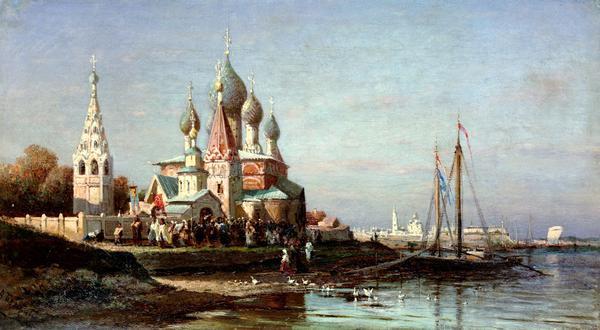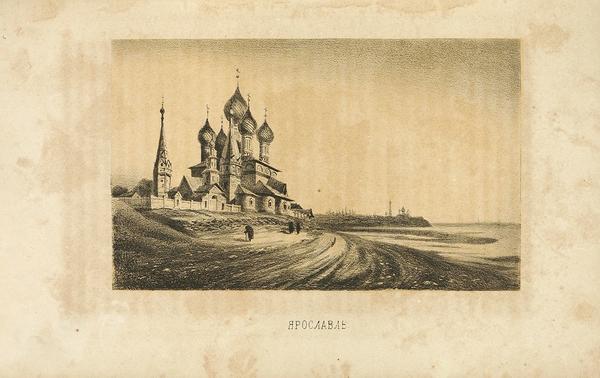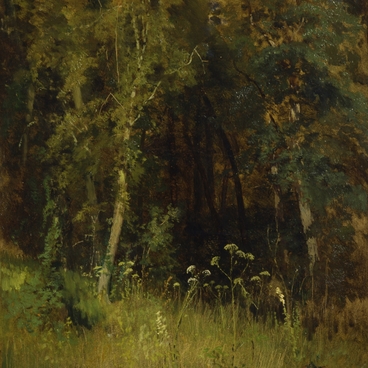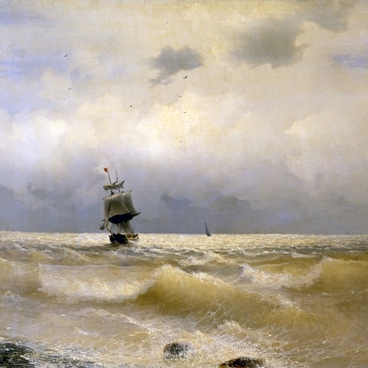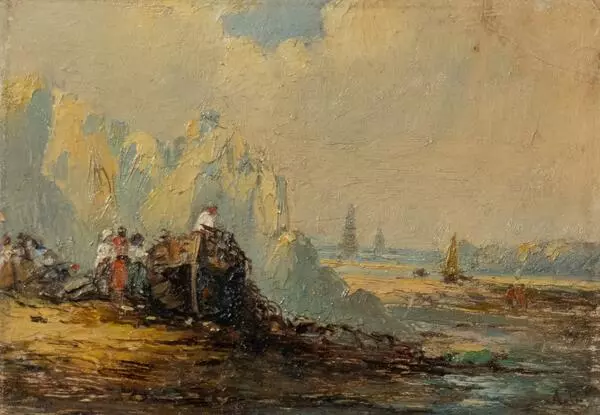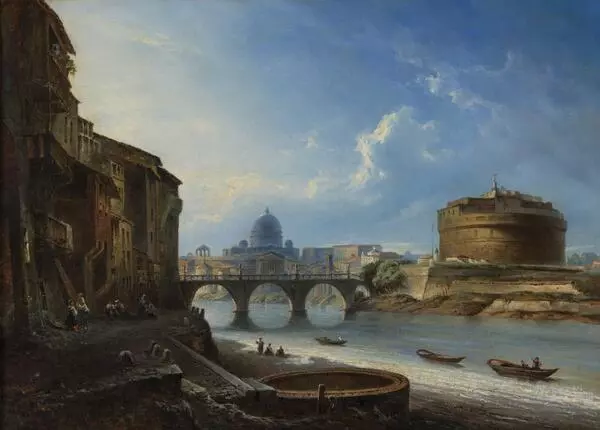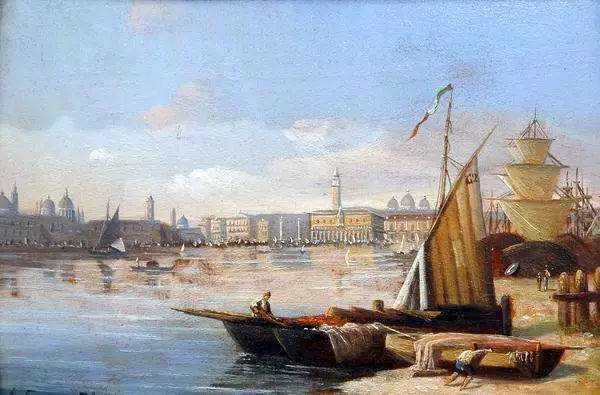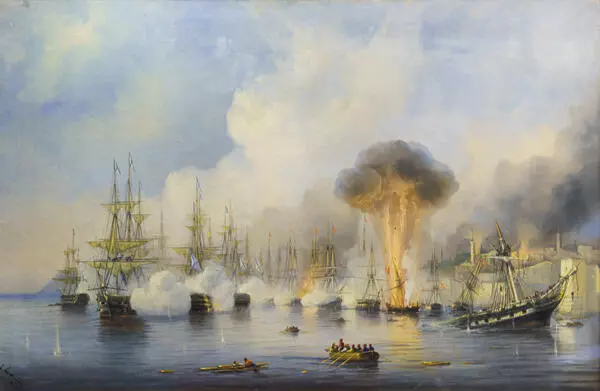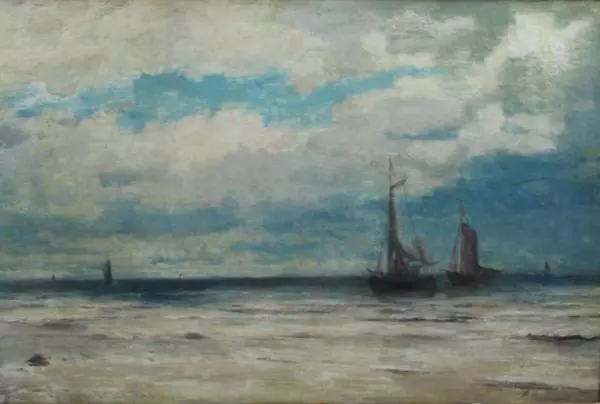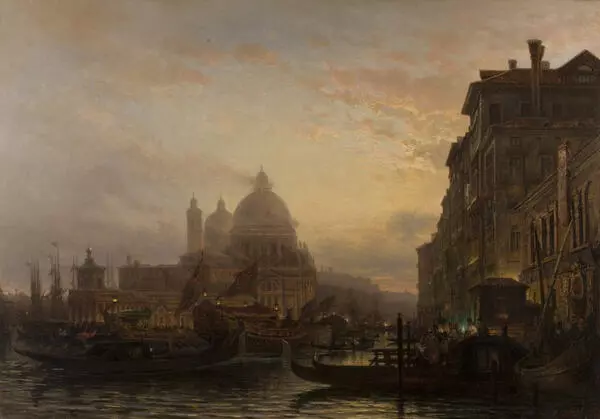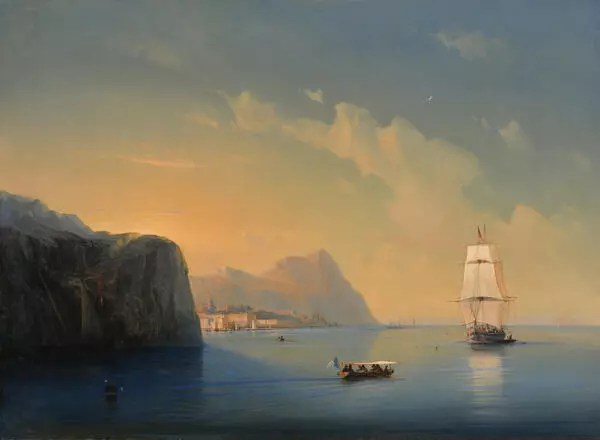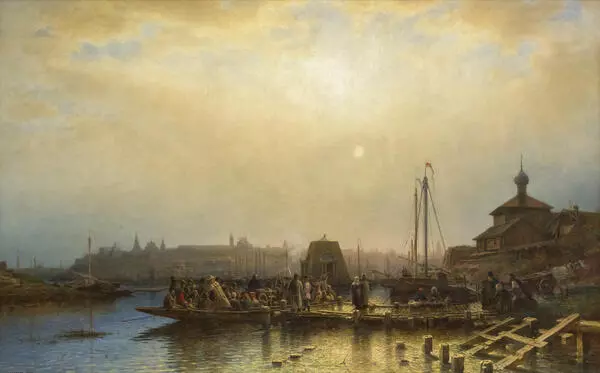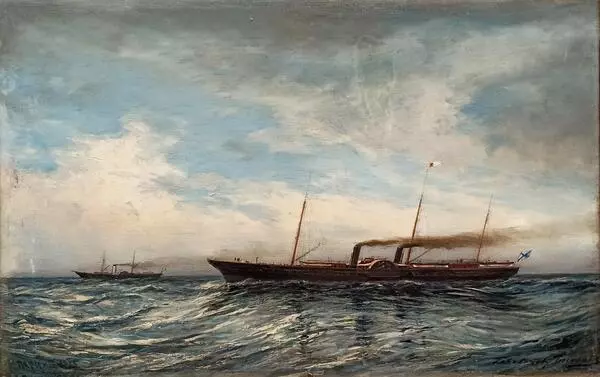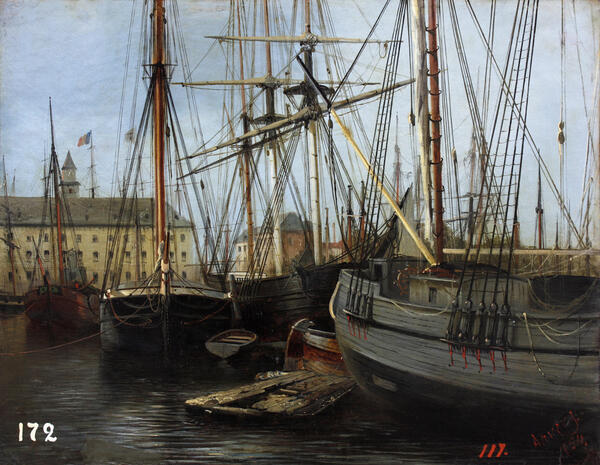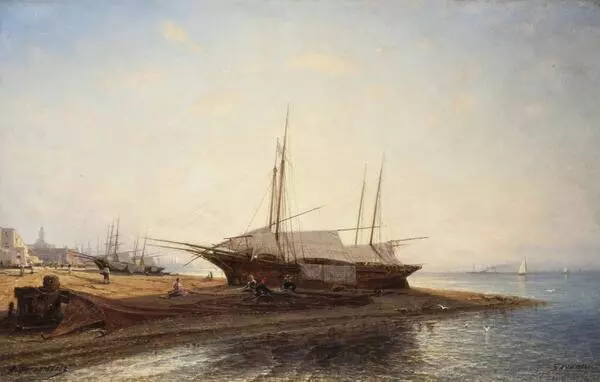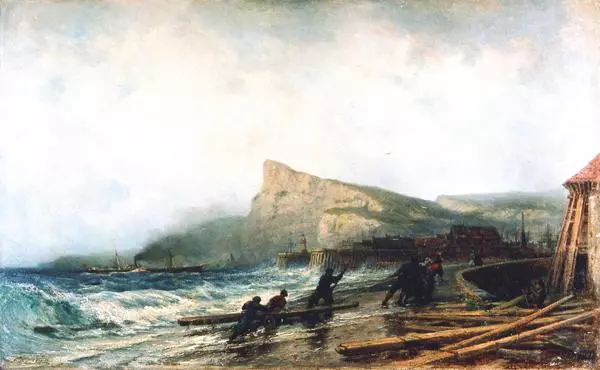Alexei Bogolyubov painted A Religious Procession in Yaroslavl in 1863. At the time, he was traveling across Russia with Tsesarevich Nicholas, son of Emperor Alexander II and heir apparent to the throne.
1 / 3
A Religious Procession in Yaroslavl
Время создания
1863
Размер
26,6x46,3 cm
26.6×46.3 cm
26.6×46.3 cm
Техника
Oil on canvas
Коллекция
4
Открыть в приложении#1
Alexei Bogolyubov
A Religious Procession in Yaroslavl
#2
#3
As likely as not, this landscape was a preparatory sketch; however, it is called a study-picture. Bogolyubov knew how to make his sketches look finished as though they were separate and independent canvases.
#4
‘Studies are what proves his talent most of all. In them, he is sometimes even positively original’,
wrote painter Ivan Kramskoy.
#5
In this work, the artist portrayed the Church of the Prophet Elijah on the bank of the River Volga. By the portal stands a crowd of people forming a religious procession. Painters rarely put people on canvases of this kind, but it was a way for Bogolyubov to ‘animate’ the landscape.
#6
The church was built in the mid-17th century, and its appearance came unchanged until this day. Bogolyubov got interested in the church, because he studied history and was fond of antiquities. The artist painted the building on more than one occasion: He had been in Yaroslavl in 1861 and made a similar sketch. It was included in the guidebook The Volga from Tver to Astrakhan written by Nikolai Bogolyubov, the painter’s brother.
#12
Nikolai Bogolyubov, The Volga from Tver to Astrakhan, 1862, Sheet 10. A lithographic print. Source: www.litfund.ru.
#7
Bogolyubov presented the study A Religious Procession in Yaroslavl to his friend Ivan Babst, a professor of Moscow University. After the latter’s death, his estate passed the painting to the Radishchev Museum.
#8
Art critics believe this work belongs to the very beginning of the mature period in Bogolyubov’s career. In that time, he worked in the genre of academic realistic landscape, and paid a great deal of attention to the depiction of light, air and water.
#9
Bogolyubov was a self-taught artist. He had graduated from the Moscow Cadet Corps. After college, the future painter enlisted to the Navy, went by warship on a military campaign to Europe and painted a great deal of seascapes during that expedition. He formulated the main principle of his work there: To paint from nature, in order to achieve authenticity.
#11
When in Portugal, he made acquaintance of Karl Bryullov who noticed a young talent and advised him to become a painter. The meeting was life changing for Bogolyubov, and when he came back to Russia, he enrolled into the Academy of Arts in St. Petersburg.
From the 1870s and until his dying day, the artist lived and worked in France. There he borrowed the idea of founding an art museum with an affiliated school. He decided to establish a museum in Saratov and donate his art collection to it.
#10
In 1885, Bogolyubov opened the first public museum in Russia’s provinces, and named it after his grandfather, poet and writer Alexander Radishchev who had fallen out of grace with the authorities in his time. It was not a random choice of location: Theirs was an old noble family originating from the Saratov Governorate. Bogolyubov left his mark in history as a professional navy man, a landscape painter, and the founder of the Radishchev Museum.
#13
A.N. Radishchev Saratov State Museum of Fine Arts
читать дальшескрыть
00:00
00:00
1x
A Religious Procession in Yaroslavl
Время создания
1863
Размер
26,6x46,3 cm
26.6×46.3 cm
26.6×46.3 cm
Техника
Oil on canvas
Коллекция
4
Открыть в приложении
Поделиться


